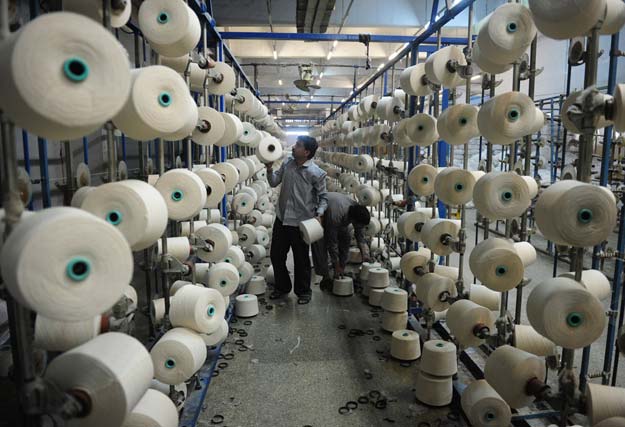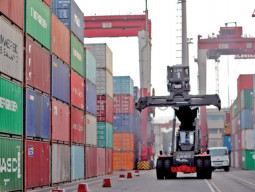
KARACHI:
Notwithstanding the improved access to the European market under the Generalised System of Preferences (GSP)-Plus scheme that Pakistan received at the end of 2013, credit off-take by the country’s textile industry has remained largely flat in the last one year.
According to the latest data released by the State Bank of Pakistan (SBP), outstanding position of loans extended to textile businesses as of January 31 was Rs606.8 billion. This is 0.4% less than the corresponding figure recorded at the end of January 2014.

Businesses tend to take more loans when they expect better economic conditions ahead. Increased credit off-take results in long-term investments and easy availability of working capital for businesses to expand their output capacity.
Speaking to The Express Tribune, BMA Capital research analyst Jehanzaib Zafar said major textile players like the Nishat Group borrowed heavily in the preceding fiscal year to expand their production capacity. It means that the year-on-year rise in the outstanding position of loans extended to textile companies looks relatively smaller this year, he added.
However, Zafar said that textile businesses are likely to increase their borrowings going forward because of lower interest rates. The SBP has already decreased the key interest rate by 150 basis points since November. The central bank is expected to decrease it further in coming months in view of declining inflation numbers.
Saying that the textile sector is highly leveraged, Zafar noted it will significantly benefit from the on-going monetary easing cycle. The share of textiles within the total outstanding loans to private-sector businesses stood at 20.8% at the end of January.
Value-added products have a comparatively smaller share in Pakistan’s overall textile industry, which is dominated by businesses that deal in spinning, weaving and finishing of textile products. Outstanding loans of such businesses at the end of January amounted to Rs473.2 billion. This was only 0.1% higher than the corresponding figure from the same month of 2014.

Out of value-added categories of textiles, loans taken out by businesses dealing in knitwear clocked up at Rs29.3 billion. The year-on-year increase in the knitwear category was 25.1%. The annualised rise in the loans of businesses producing made-up textile products clocked up at 2.6% while the corresponding increase in the readymade garments category was 2.2%.
Pakistan’s exports of textiles decreased 0.8% on a year-on-year basis to $7.9 billion in July-January. According to Zafar, the reason for flat performance on the exports front during the first seven months of 2014-15 is a sharp depreciation in the euro.
However, he noted that while major export categories like cotton yarn and cotton cloth show a decline, exports of value-added products increased notably in the period under consideration.
The exports of readymade garments in July-January increased to $1.1 billion, up 13.3% from a year ago.
“We believe textile exports are going to increase in the second half of the current fiscal year, as seasonal rise in the volumetric sales is going to play an important role,” he said.
Published in The Express Tribune, March 7th, 2015.
Like Business on Facebook, follow @TribuneBiz on Twitter to stay informed and join in the conversation.


































































COMMENTS
Comments are moderated and generally will be posted if they are on-topic and not abusive.
For more information, please see our Comments FAQ